GVL sheets: types and scope

Plasterboard boards have become part of our everyday life. The scope of their application is extremely wide - they are indispensable for wall decoration and the construction of designer structures in the interior - arches, niches, multi-level ceilings. At the same time, the material has a significant drawback - it does not withstand heavy objects well, therefore, in order to fix a large-weight decorative element on it, it is required to mount special fasteners.
Few people know, but this problem is very easy to solve. Drywall has an analogue that can withstand gravity - this is gypsum fiber board, or gypsum fiber sheet.

Peculiarities
Gypsum fiber sheets are a finishing material made of stucco with the addition of cellulose, which is necessary for a stronger binding of gypsum particles. Visually, it is similar to gypsum board, but has higher strength indicators.
Gypsum in the composition of GVL accounts for about 80%, cellulose accounts for 20%. Raw materials are mixed and pressed, as a result of such processing, and a standard gypsum fiber sheet is obtained. It is a plate with a homogeneous structure without a paper sheath.

By the way, gypsum fiber is an environmentally friendly material, and the cellulose used for its production is obtained from recycled materials, which makes it possible not only to take care of the cleanliness of the environment, but also significantly reduces the cost of producing boards, which means that the cost of products is affordable for Russians.
In addition to uniformity and hardness, a specific parameter of gypsum fiber is considered to be the ability to maintain moisture levels. With an increased indicator, the plate absorbs excess moisture, and when the air is dry, on the contrary, it releases it.
By the way, they produce GVLV-plates that are resistant to moisture, which are a type of GVL.

Due to its high strength, the toughness of the material is optimized. The plate is quite plastic, but it does not crumble, which distinguishes the material from drywall. So, if a nail is hammered into the GVL, then the sheet will hold it like wood.


Advantages and disadvantages
Like any building materials, gypsum fiber has its advantages and disadvantages.

GVL has a number of advantages that make it possible to use it in almost any finishing work.
- Environmental Safety. Since gypsum and cellulose predominate in the composition of gypsum fiber without the addition of synthetic components, this material is environmentally friendly, does not emit harmful and toxic substances, therefore it can be safely used in children's rooms, as well as in the premises of health centers. Does not cause allergies.
- Maintaining a healthy indoor climate. The gypsum fiber sheet is characterized by a microporous structure, which leads to the fact that the plate "breathes", air freely penetrates through it, preventing the appearance of fungus and the reproduction of dangerous mold.
GVL is distinguished by good hygroscopicity and resistance to temperature fluctuations, therefore it can be installed in rooms with high or low humidity, as well as in cold, weakly heated houses.
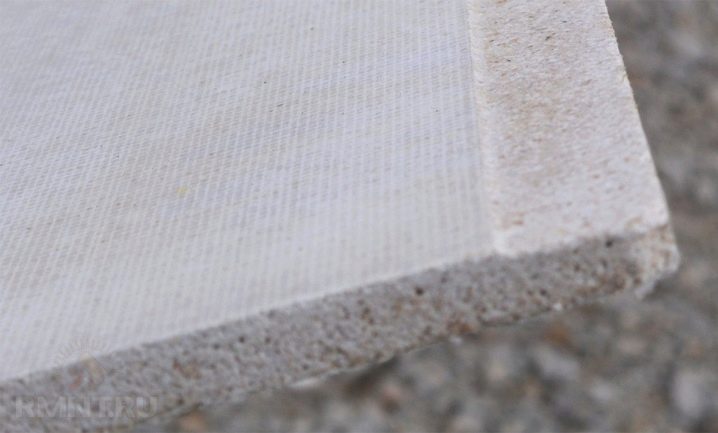
- Strength and wear resistance. Gypsum fiber is highly durable, can withstand significant weight, which is why its use is justified when creating a wide variety of interior structures - niches, podiums, etc.To fix a heavy object on the stove, you do not need to equip special belts and use technical devices, you just need to screw in a screw, as is done with wood surfaces.
- The material is durable. It does not deform upon impact, therefore it is often used for installing floor screeds or as a substrate for floors.
- High viscosity allows you to cut gypsum fiber without waste and screw self-tapping screws into it.

- The special structure of the material makes it practical and durable - the technical characteristics remain unchanged for many years of service. This, by the way, favorably distinguishes GVL from drywall, which can deteriorate over time and release dust with gypsum particles into the air. Often, such destruction becomes the cause of allergies and diseases of the bronchopulmonary system in adults and children.
- The material has low thermal conductivity, therefore it is used for thermal insulation of premises.
- Installation of GVL can significantly reduce the noise level. Depending on the size of the sheet of gypsum fiber board, this figure can be reduced by 35-40 dB, so gypsum fiber is optimal for decorating rooms and bedrooms.


- Light weight. GVL by weight is more than a sheet of gypsum board, however, special mechanisms are not required for its transportation - it can be easily carried alone, lifted and held in the desired position during installation work.
- Frost resistance. Another advantage of GVL is its resistance to temperature extremes. It has been proven that the material does not form cracks even after freezing for 10 times followed by thawing. This is what makes the use of gypsum fiber topical when carrying out finishing work in rooms with low temperatures, which are rarely and insufficiently heated.

With all the advantages of the material, it also has a number of disadvantages.
High strength also gives a minus - GVL is difficult to bend, therefore, in the manufacture of interior structures with curved shapes, it is worth giving preference to drywall.
Gypsum fiber is more difficult to cut: if the gypsum board is notched and then broken off, then the plates from the gypsum fiber board must be cut from beginning to end. If this rule is violated, the likelihood of breakage during installation and the further occurrence of deformations increases.

The high cost of the sheet is also a significant disadvantage. - a sheet of gypsum plasterboard is significantly more expensive than a gypsum board. Today, the price of GVL is higher than the price of a similar size of plywood, DSV and OSB boards, so its use is impossible in conditions of a limited repair budget.
As the reviews say, sheets of gypsum fiber from domestic manufacturers are a little dusty. However, foreign counterparts are devoid of this drawback.
These are, perhaps, all the shortcomings of gypsum fiber boards. Of course, they are negligible in comparison with the merits of the material. However, they must be taken into account when planning repairs.


GVL and GKL: what's the difference?
It is obvious that drywall and gypsum fiber have many similarities and differences. The correct choice largely depends on the conditions and parameters of the premises where the finishing will be carried out. So, GVL is optimal for trade, industrial and warehouse premises. For the manufacture of columns and arches in houses and apartments, experts recommend giving preference to plasterboard slabs.
Let's figure out what are the main differences between the two gypsum-based materials.

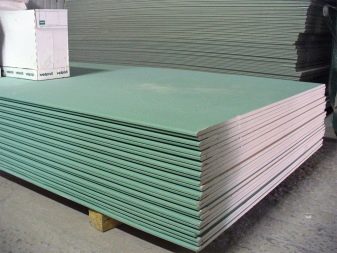
Let's start with the fact that the technology of production of GVL and GCR is different. In the production of drywall, they are based on the sandwich principle (two layers of thick cardboard and a dense layer of gypsum between them). In GVL, cellulose fragments are initially introduced into the gypsum mixture and pressed repeatedly, resulting in the strength and fire resistance of GVL.
Drywall has a heterogeneous structure, so it is difficult to cut - when cutting, chips are formed and it crumbles.Experts advise to use the sheet in whole pieces, while gypsum fiber freely lends itself to any cutting and adjustment to the required shapes and sizes.


The advantage of drywall is the fact that when moistened, it becomes flexible, and as it dries, it restores strength.
If the plate will be covered with wallpaper in the future, then the gypsum board will be the best choice.
GKL slabs are not as strong in bending as GKL, not so suitable for interior finishing work. But the frost resistance indicators of gypsum fiber are higher than that of drywall. Defects on the first appear only after 15 freezes, but on the GCR - after the 4th.

The fire-fighting properties of gypsum fiber are higher, the material is difficult to ignite and does not support combustion.
The different performance characteristics of the two types of boards lead to differences in the areas of use. So, for ceilings, it is better to purchase drywall - this is a lightweight material. Its weight makes it convenient to carry out installation work, and if in the future, in the event of force majeure, the structure collapses, it will not cause tangible damage to the health and property of the inhabitants of the apartments.

When installing interior partitions, the choice of slabs will be influenced by the intended shape of the structure. It is desirable to form rectangular openings from gypsum fiber board, they will create the required rigidity and sound insulation. For the installation of arches with a rounded decor, it is better to give preference to plasterboard compositions.
In rooms with high levels of humidity - bath, kitchen, shower gypsum fiber is suitable due to its high hygroscopicity. Drywall does not possess such properties, so it should be left for processing bedrooms and guest rooms.


Both materials are characterized by good environmental friendliness., demonstrate good thermal insulation and sound absorption. They contain no toxic substances, they do not emit an odor and do not conduct current. Therefore, both GVL and GKL can be successfully used in wooden and brick housing construction.
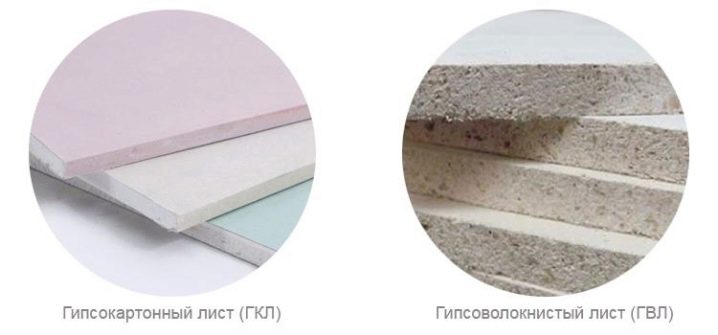
Types and characteristics
There are two types of gypsum fiber materials on the free market:
- standard;
- moisture resistant.
Moisture resistant gypsum fiber recommended for installation in kitchens, dining rooms and other rooms with high humidity. The material is covered with a special hydrophobic impregnation that prevents water from entering the slabs, so the gypsum structure is preserved in its original form. This is very important, given the high ability of gypsum to absorb water. This type of GVL can also be used in ordinary premises, especially since its prices do not greatly exceed the cost of a standard GVL sheet.

Gypsum fiber sheets are also divided according to the type of edge:
- with a straight edge is used for the installation of a dry screed;
- with a falsetto edge - ideal for installing partitions, walls and niches.

According to the degree of finishing, gypsum fiber board is divided into:
- polished;
- unpolished.
The size of the slabs from most manufacturers is traditional: the thickness is 10 and 12 mm, the length is 2500 mm, and the width is 1200 mm. For walls, sheets with a thickness of 1 cm are suitable, and for a floor - 2 cm. Some manufacturers may have other sizes: the length can be 2.5, 2.7 m and 3 m, and the width - 0.5 m and 1 m. The weight of the sheet is equal to 17 kg.

To assess the quality of gypsum fiber, it is worth getting acquainted with its physical parameters.
As already mentioned, GVL is 80% composed of stucco and 20% cellulose. This percentage can vary by +/- 5%. Strength parameter is 1.2-1.25 t / cm3. By the way, this indicator is equivalent to the density of expanded clay concrete and is twice the corresponding level for red brick. Density is inversely proportional to the thickness of the sheet: for GVL 10 or 12 mm it is equal to 1.2 tn / cm3, and with a thickness of 14 and 19 mm, the parameter is 1.25 tn / cm3.

The calculated ultimate strength is also noted at a rather high level: at bending it is 0.053 tons / cm2, and under compression - 0.1 tons / cm2.For comparison - with a similar value, even strong pressing of a sharp stiletto heel will not be able to damage the surface of the sheet.
Thermal conductivity - up to 0.36 W mK. Swelling in the liquid reaches 1.5% after a day. GVL is resistant to combustion. It is a fire-resistant compound that does not self-ignite and does not spread flames over the surface.
This exceptional performance is due to the special latex impregnation treatment carried out in the factory.


The material demonstrates good sound absorption - 40 dB.
For comparison, the same indicator for other finishing materials is:
- OSB boards - 18 dB;
- Chipboard - 9 dB;
- Fiberboard - 20 dB;
- Drywall - 35 dB;
- Half-brick wall - 44 dB;
- Concrete partition (16 cm) - 48 dB.


Which to choose?
A wide selection of materials from gypsum fiber board makes it possible to choose the most profitable finishing option in specific conditions, as well as significantly save on the absence of those consumer properties that are not necessary.
As already noted, GVL is standard and moisture resistant. For the decoration of the kitchen, dining room, shower rooms and sanitary areas, moisture-resistant sheets are used. For standard rooms, preference is given to ordinary plates, they are more versatile and optimal for installation in rooms with standard indicators of humidity and air temperature.

The scope of use of GVL is wide. Gypsum fiber has found application in the decoration of residential premises, as well as production workshops, shopping centers, warehouses, hangars, etc.
The material is widely used to install stylish walls and partitions. With the use of fiber, they improve the performance of surfaces in pantries, attics and attics. Plates are often mounted in basements as a base for floors and walls, as well as a base for a cabinet.


The antiallergenic and environmental friendliness of GVL made it possible to use the plates in children's educational institutions and centers for additional education for children and adolescents. And this is justified - the natural irradiation of the coating is three times lower than that of red brick!
The high stiffness index made it possible to use gypsum fiber where strict requirements are imposed on the stability of the structure (on tennis courts, in gyms, etc.).
High fire resistance has led to the popularity of slabs in elevator shafts, escape routes, electrical substations. However, for repairing the walls of boiler rooms, switchboards and other structures, it is advisable to purchase GKLVO.
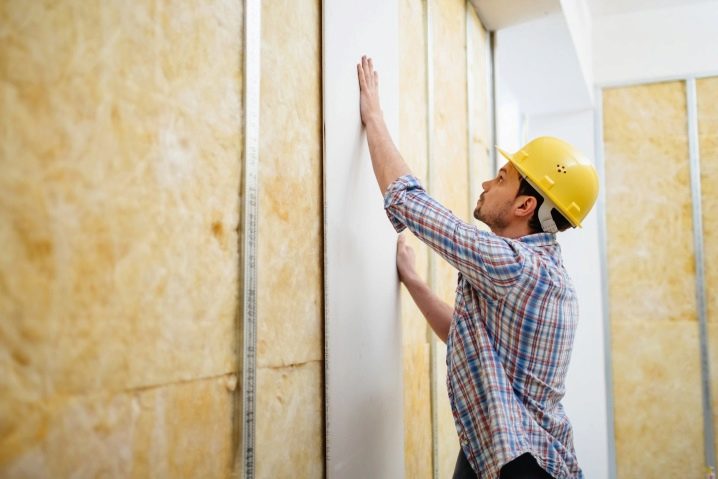
The use of gypsum fiber on the floor is very popular. For this, panels are taken that can withstand high humidity. Due to the low expansion coefficient, all joints remain sealed. GVL is equally efficiently mounted on wooden and metal frames and creates a perfectly flat surface, which is later tiled or painted.
Gypsum fiber is often used for doors and windows when arranging slopes.

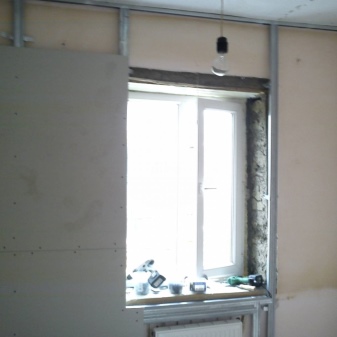
Tools and additional materials
To install the gypsum fiber correctly, you should follow simple rules. Do not chamfer before applying the putty. In the work, you need to use special screws for GVL.
To prepare the slabs, mark and cut them. This is done using a jigsaw or an electric saw, and the edge is processed using a roughing planer.


Certain materials are required for quality work.
Plates:
- standard GVL;
- moisture resistant gypsum fiber board.


Profiles of three types for the device of the starter frame:
- connecting;
- rack-mount;
- wall.
Bars are used to fix some structural elements or as an alternative to a profile. Fasteners - self-tapping screws, dowels, anchors, brackets and other devices are needed to install the metal profile to the walls.



For the preliminary preparation of the walls, you need:
- universal primer;
- putty for interior work;
- serpyanka ribbon;
- special overlays.



For decorative finishes, purchase:
- interior paint;
- non-woven, vinyl or paper wallpaper;
- decorative plaster;
- tiles, etc.




Every tool can cope with gypsum fiber, its rigidity and strength requires special devices:
- puncher;
- screwdriver;
- scissors for metal;
- saw on GVL;
- a set of standard tools;
- fixtures for finishing work.


Correctly selected and smoothly working tools will allow you to carry out all work at the highest level and avoid deformation and breakage of gypsum fiber.

Work technology
Very often, craftsmen who carry out drywall installation on their own believe that work with gypsum plasterboard is carried out in the same way. And this is a big mistake - gypsum fiber is stronger and at the same time more fragile to break. The material breaks easily and does not bend, therefore its processing requires more skill and technical training than the processing of drywall.

Tools for cutting gypsum fiber board.
- Construction knife at least 12 mm thick. Take care of a replacement set of blades. In the process of work, they will often become blunt and you will need to periodically change them.
- A special hacksaw for GVL allows you to saw off plates without the formation of dust.
- A circulating saw is the fastest way to cut gypsum fiber, but also the most dusty one. The grinder can only be used in well-ventilated areas with eye and respiratory protection.
- A jigsaw with a built-in vacuum cleaner is another effective option. However, just like the previous one, it requires the use of construction glasses and a respirator.




Be sure to take care of safety at work.
You should act like this:
- to begin with, you should mark out the sheet of GVL - the marking line is necessary so that you can evenly attach the ruler;
- use a knife to forcefully trace the markings several times until the furrow size is 2⁄3 of the total sheet thickness;
- put a special rail under the slot;
- break the material with a quick movement of your hands.
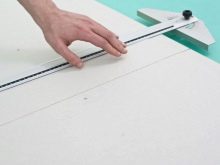


As a rule, when cutting GVL, smooth edges are formed and there are no problems with the layout. In case, nevertheless, there is a need for a small adjustment, you can use the most ordinary roughing plane.
A boot cutter is ideal for obtaining a standard fold.
With a significant amount of work, it is worth giving preference to a milling cutter - the use of cutters with a step of 2-4 mm allows you to perform the necessary work in a couple of approaches. After the cut, do not turn or lift the sheet, otherwise it may burst.

Frame
Installation of gypsum fiber boards can be done in two main ways - frame and frameless. In the first case, a frame is preliminarily constructed, on which the slabs are subsequently fixed. In the second, the slabs are glued directly to the wall surface using special glue.

The best material for creating a false wall frame will be a metal profile.
The work is carried out in the following sequence:
- Marking the room - with the help of special tools, marks are made on the surface, along which the frame will be mounted in the future.
- The installation of the starting profile provides for the installation of the frame around the perimeter of the room. For this, anchors with plastic or metal sleeves are used. They are screwed into pre-drilled holes with a depth of 40 mm or more. In the areas where the profile adjoins the main structures, a seal is applied.


- Installation of the rack opening begins with the doorway, its edges are mounted from two-rack elements, built exactly into each other. All the necessary details are certainly fixed with wooden blocks. The jumper is made from a profile for the posts, bent U-shaped.
- Formation of vertical racks - they are inserted into the starting profile from above and below, the step is calculated so that the edges of the gypsum fiber board, when sheathing, fall exactly on the center of the guide. The main thing is that on both sides of the formed partition, the GVL-sheets are placed with a slight displacement of the joints.

When installing the frame, do not forget to think over the communications; for this purpose, special holes are made in the racks for cables and electrical wires.
Sheathing the frame with panels is a rather laborious work, requiring the expenditure of time and effort:
- The GVL sheet is trimmed so that when the plates are joined, a gap of at least 5 mm remains. If this rule is not followed, deformations may occur in the future.
- The trimmed gypsum fiber sheet is applied to the core and leveled. If its edge "sags", an additional metal jumper is inserted into the structure.
- The plate is fixed with self-tapping screws, the screws should be taken 4 cm long and tightened in 30 cm increments.

Sheathing is performed first from the inside of the partition, then communications are laid, and only after the end of this stage of work, the outer side of the installation is sheathed with plates.
The structure of gypsum fiber is porous, which often causes uneven application of paint or glue during further surface finishing from gypsum fiber board. That is why you should carefully putty the surfaces of the entire area of the slabs. To do this, you can use the most common gypsum plaster. Only then does the wall become suitable for any type of finishing material.


A Few Tips
When installing the frame, it is advisable to use metal or wooden profile types. If timber slats are used, then their minimum allowable section should be 30x50 mm on the ceiling and 25x75 mm on vertical posts. The step of the racks should not be narrower than the width of the GVL sheet.
All slabs must be hand-assembled from the center premises and strictly perpendicular. To insulate the space between the racks, it is worth adding glass wool.
The frame method is used in cases where the walls are old, with irregularities and defects.

Installation of GVL in a frameless way is not so common, but for a residential building this option is preferable.
Work on the installation of slabs directly on the walls is carried out in a certain sequence:
- If the maximum unevenness of the wall does not exceed 4 mm, then the plates are fastened with a putty - it is applied in a neat layer in the longitudinal direction along the perimeter of the gypsum fiber board.
- If the irregularities are in the range of 4-20 mm, then it is advisable to use a special glue, it is applied directly to the gypsum fiber board in the center and around the perimeter.
- If the irregularities exceed 20 mm, then it is better to use the frame method. But if this is not possible, then the work must be carried out in several stages. To begin with, with the help of glue, strips of gypsum fiber board with a width of 10 cm are attached to the wall, and only after that cut sheets of the desired size are applied to these same strips using putty.

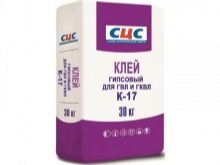

Please note that if you plan to fasten furniture or heavy interior items to the GVL-plates, then the glue must be applied to the entire surface of the sheet, and not only along the perimeter.
The walls are pasted over starting from the corner, then along the edge. When facing wooden surfaces, they additionally resort to fixing the sheets with self-tapping screws or roofing nails. Similarly, work is carried out when decorating a balcony with your own hands.


As in the case of the frame installation method, the final stage of laying the gypsum fiber should be a decorative finish - puttying of all joints and fasteners. The surface should be flat, this will allow your renovation to be aesthetic and durable.
There are some peculiarities in laying gypsum fiber on the floor. First, they carefully clean the surface, remove all debris, collect dust. All cracks and crevices are covered up.To protect against moisture, a plastic wrap is laid, and along the perimeter it is treated with an edge band. It not only fixes the coating, but also contributes to better sound insulation. Next, beacons are inserted and a layer of expanded clay is poured. Only after that, the laying of gypsum fiber sheets with increased moisture resistance begins. The first layer is fixed with glue or mastic, the second layer of plates is placed on top of it, screws are used to fix them.


Tips & Tricks
The room temperature should not fall below 11 degrees Celsius. If work is carried out in the winter, you must first turn on the heating.
Before installation, GVL sheets should be kept for a couple of days in the room where the installation will take place so that they are acclimatized.
Throughout the entire installation period, the constant temperature and humidity level should be observed. Otherwise, distortions and installation defects are possible, even if gypsum fiber material is used in the work.
If you plan to lay several layers of slabs, then it is extremely important to carry out all the work within one day.

Reviews
Reviews about the use of gypsum fiber materials in interior decoration are the most controversial. On the one hand, consumers from competent sources receive information about the advantages of GVL sheets, their advantages, reliability, practicality and durability. At the same time, many are stopped from buying by the high price of the product, which significantly exceeds the cost of drywall sheets, plywood and chipboard boards.

According to users, the use of alternative materials gives no less effect, provides structural strength, thermal insulation and absorption of unnecessary noise, while requiring much less effort and money.
Buyers note the large weight of the boards, which makes it impossible to work on finishing by one person; considerable physical effort is required to carry and hold the sheet in the desired position during fastening.

It is doubtful that gypsum fiber can be used in the bathroom and shower room.
Consumers doubt that gypsum, even if specially treated, can be resistant to moisture. Unfortunately, the material is relatively new and there is currently no data on the effects of moisture on it in the long term.
However, consumers who still purchased gypsum fiber boards are satisfied with the quality of this finishing material.


For the features and advantages of moisture-resistant GVL sheets, see the video below.













The comment was sent successfully.